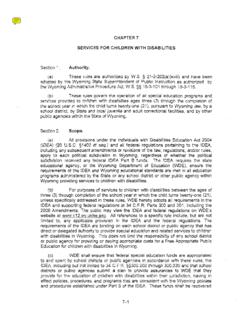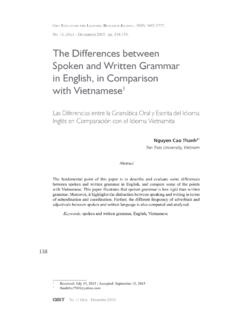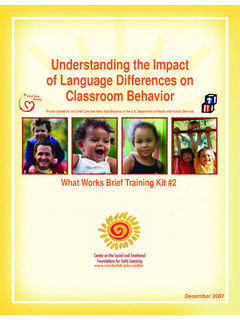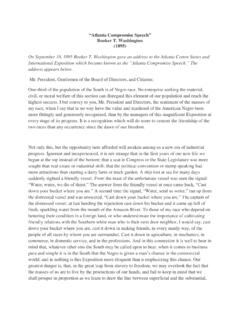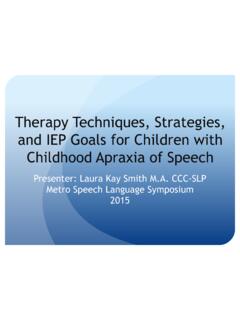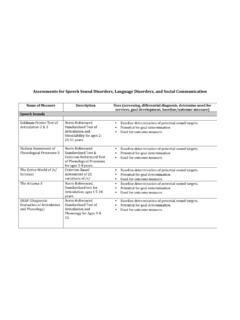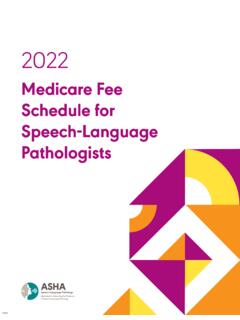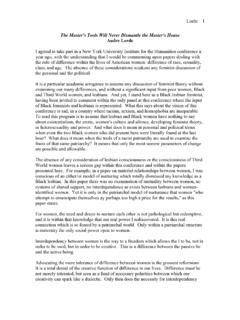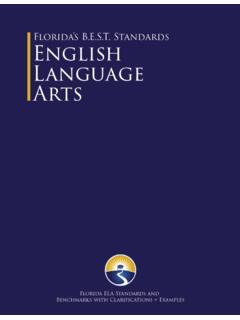Transcription of Early On: Differences in Part C & Part B Services
1 -- 1 - Differences in part C (Birth to 3) & part B (3 to 5 Years) Services Early Guiding parents of infants and toddlers with special needs through the steps of Early intervention supports and Services in Wyoming Parent Information Center 500 W. Lott St, Suite A, Buffalo, WY 82834 (307) 684-2277 Booklet #2 - 2 - Funding for this publication was provided, in part , by the Wyoming Department of Health, Early Intervention and Education Program. Early is a publication of the Parent Information Center, a project of Parents Helping Parents of WY, Inc., funded by the US Department of Education, Office of Special Education and Rehabilitative Services .
2 Views expressed in this publication are not necessarily those of the US Department of Education. - 3 - T What are the Parts? he Individuals with Disabilities Education Act (IDEA) is the federal law that governs special education there s a lot to it! In fact, there are four different parts to IDEA: part A, part B, part C, and part D. part A lays out the basic foundation and covers general provisions and part D covers national activities to improve education of children with disabilities. Parts B and C govern the provision of Services for children with disabilities. The Differences between Parts B and C is what this booklet will address. If your family is receiving Early intervention Services through infant and toddler programs under part C, planning for the transition to part B will happen before your child s 3rd birthday.
3 Your team will work with you to help make the transition as smooth as possible, and, in many cases, most things about your child s Services will remain the same. Even if you notice few changes, there are some key Differences between part C and part B that are important to understand. part C applies specifically to infants and toddlers, ages birth through age 2, while part B is for children ages 3 to 21 years of age. - 4 - Who s In Charge part C: WY Department of Health part B: WY Department of Education One of the Differences between part C and part B is the state agency in charge - called the lead. Under part C, the lead agency is designated by the state, and in Wyoming, this is the Department of Health, under the Behavioral Health Division, Developmental Disabilities Section, Early Intervention and Education Programs.
4 For part B, the lead agency is the Wyoming Department of Education, Special Programs Unit. This is important to know in case there are any disagreements between you and the school team and want to take steps for dispute resolution. More information on resolving disputes can be found in the Parent Information Center s Baby Steps booklet for infants and toddlers under part C and in the Keys for Confident and Effective Parent Participation in the Special Education Process parent rights handbook for part B. - 5 - Eligibility Criteria part C: 1 disability category part B: 13 disability categories Both part C and part B have similar evaluation procedures. A parent or guardian must give permission (called consent) before an evaluation can take place.
5 In Wyoming, the responsibility of providing an evaluation lies with fourteen regional child developmental programs. These programs contract with the Wyoming Department of Health to provide Early Intervention Services in every community across the state. Information on the Regional Child Developmental Centers (CDC) can be found at or ddd/ or by calling the WY Department of Health at 307-777-6972 Once the consent for an evaluation has been received, the CDC s must complete the evaluation within a reasonable amount of time -- 45 days for part C and 60 days for part B. The CDC team will then gather information about the child in a variety of ways. This can be done by using formal tests, interviews, and observations.
6 Parent input is a requirement for both part C and part B. - 6 - A child is found eligible for part C Services if they: 1) have a developmental delay in: Cognitive development (thinking and learning) Physical development, including health status (moving, seeing and hearing), also called gross and fine motor development Communication development- expressive and receptive language (understanding and using sounds, gestures and words) Social and emotional development (responding to and developing relationships with other people) Adaptive (functional) development (taking care of one s self, for example: feeding, dressing, etc.); 2) have been diagnosed with a physical or medical condition that has a high probability of resulting in a developmental delay; 3) are considered at risk infants or toddlers.
7 Although children who experience developmental delays all have a unique set of strengths and needs, they all receive Services under the same category. - 7 - While there is only one disability category for part C (Developmental Delays), there are 13 different categories in part B under the IDEA. A child can receive special education and related Services if they are found to be eligible under any of these categories: Autism Spectrum Disorder, Cognitive Disability, Deaf-Blindness, Developmental Delay (through age 9 in WY), Emotional Disability, Hearing Impairment, Multiple Disabilities, Orthopedic Impairment, Other Health Impairment, Specific Learning Disability, Speech-Language Impairment, Traumatic Brain Injury, or Visual Impairment.
8 Each one of these categories has its own set of eligibility criteria, and the team will decide which category best describes the child s needs based on the results of the evaluation. It is important to remember that a child s individual needs determine what Services they receive, NOT their disability category. - 8 - Individualized Plans part C: Individualized Family Service Plan (IFSP) part B: Individualized Education Program (IEP) Both part C and part B require that all children who receive Services have an individualized plan in place. In part C, this plan is called an Individualized Family Service Plan (IFSP) because it focuses on the needs of the family. In part B, it is called an Individualized Education Program (IEP) because it changes its focus to the individual needs of the child.
9 Both types of plans contain information about the child s present level of functioning, his or her strengths and needs, measurable outcomes, the Services to be provided, when and how long those Services will be provided, and the individuals responsible for providing the Services . Some of the main Differences between an IFSP and an IEP include: Location of Services . IFSPs require that Services be provided in the child s natural environment settings that are natural for children of that age (home, childcare centers, etc.). The natural environment requires that infant/toddler be served where the child might be if he/she did not have a disability or special health care need.
10 IEPs require that Services be provided in the least restrictive environment, meaning that the child remains with his or her nondisabled peers as much as possible. See our Early On Natural Environments Booklet at - 9 - Service Coordinator. Families of children who receive Services under part C are entitled to a Service Coordinator, who ensures that the plan is implemented correctly and coordinates between the various providers. There is no Service Coordinator under part B, although schools generally designate a case manager or contact person for each child. Review Frequency. IFSPs must be reviewed at least every 6 months, while IEPs must be reviewed at least annually.
